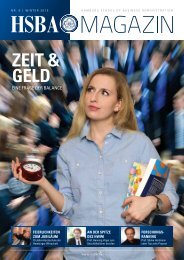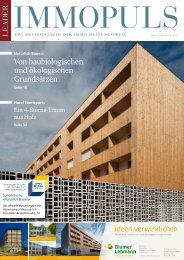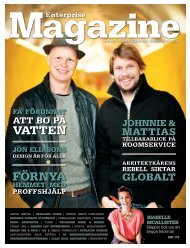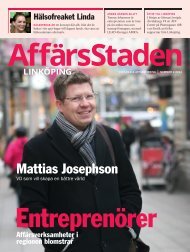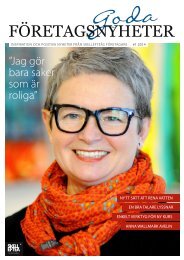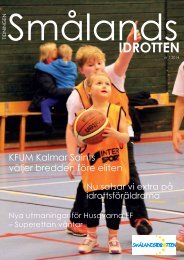Mexico’s Mining Industry
Mexico is a competitive destination for mining investment. An industry with a century-old tradition, mining remains one of the leading sources of income, employment and development in the country. But beyond the mineral wealth required to develop this activity, conditions in Mexico have made it one of the main destinations in the world for mining investment, surpassing countries that are richer in mineral resources.
Mexico is a competitive destination for mining investment. An industry with a century-old tradition, mining remains one of the leading sources of income, employment and development in the country. But beyond the mineral wealth required to develop this activity, conditions in Mexico have made it one of the main destinations in the world for mining investment, surpassing countries that are richer
in mineral resources.
You also want an ePaper? Increase the reach of your titles
YUMPU automatically turns print PDFs into web optimized ePapers that Google loves.
58 Negocios ProMéxico | The Lifestyle Negocios ProMéxico | The Lifestyle 59<br />
I tried to replicate the paintings I’d sold because I felt I needed<br />
them, but it was pointless; they weren’t the same. It was unsettling<br />
to think a part of me was leaving with a stranger and it unnerved<br />
me to think it would always be like that, so I asked myself: “What<br />
field would I like to work in where I can continue being creative and<br />
make replicas of my work without having to let go of anything?”<br />
That’s how I came to study at IES Moda Casa de Francia.<br />
—Although eventually you went back to painting, what did you<br />
learn from making clothes?<br />
I had great fun experimenting with fashion. I won awards and<br />
appeared in publications. I also made some good friends, like the<br />
designers at Trista. For two whole years I stopped painting but my<br />
illustrations improved enormously. I was serious about fashion but I<br />
needed to paint, so I went back to fight for it.<br />
—Why did you choose Berlin as your artistic lair?<br />
The first time I visited Berlin was in 2007 and I felt at home<br />
from day one. I was amazed at the number of international<br />
artists who had made the city their home but, more<br />
importantly, I made good friends from the start: musicians<br />
–like the jazz artist Kurt Rosenwinkel, who asked me to<br />
do the artwork for his most recent album, Star of Jupiter–<br />
photographers, filmmakers, conceptual artists and the like.<br />
What struck me most was the city’s famous motto “Poor but<br />
sexy”. It wasn’t expensive to rent an apartment or a studio and<br />
the exhibition venues were one-of-a-kind –derelict factories<br />
converted into galleries– and more openings, happenings and<br />
performances than I’d ever seen in one place. The thought of<br />
being part of yet another renaissance of a city with so much<br />
history was what prompted me to move there and, so far, I<br />
haven’t been disappointed.<br />
—What has Berlin taught you?<br />
Berlin has forced me to mature and change; it’s given me a<br />
much broader perspective of who I am and of my work. My<br />
approach to my work has evolved over these last five years. The<br />
city is a huge source of inspiration for me for many reasons, not<br />
just the obvious things, like the differences in language, food<br />
and weather when you’re far from your own country.<br />
There have been many changes. I now work with ink and<br />
water engraving, collage and illustrations for magazines on a<br />
regular basis.<br />
—Why the fascination with human faces in your work? Is it<br />
intentional or coincidental?<br />
I began doing loads of self-portraits and I realized how tell-tale<br />
the face is. It’s a very clear, very direct plastic language. The<br />
smallest variance in the curvature, depth or length of a line<br />
can give out a completely different message. I love to observe<br />
people and when I meet someone new, I subconsciously<br />
measure their proportions with imaginary lines. One of the<br />
first conclusions I came to from my observations was that<br />
features have nothing to do with beauty; it’s expressions that<br />
are the key, what really define a person.<br />
—If you hadn’t chosen art as a way of life, what would you be<br />
doing now?<br />
I can’t imagine myself doing anything unrelated to the so-called<br />
“art world”. If I didn’t have a career in the plastic arts, I’d probably<br />
be doing something in a world that offers the same infinite<br />
possibilities, full of color, texture and culture. Maybe that world<br />
could be in the kitchen?<br />
—You’ve started designing jewelry. Tell us about this new<br />
phase in your career.<br />
In 2012, Silvio Dulinsky, co-founder of Artency, came up to me<br />
at Berlin’s contemporary art fair, the Berliner Liste, and asked<br />
if I wanted to join his project.<br />
Artency is a Madrid-based initiative in which jewelers,<br />
plastic artists, architects, visual artists, designers and sculptors<br />
pool their knowledge to create quality jewelry that they turn<br />
into wearable art. I immediately accepted the invitation. The<br />
challenge appealed to me and I was in my element being able to<br />
combine my knowledge of design, sculpture and painting. So far,<br />
I’ve designed eight pieces inspired by brush strokes. The first<br />
molds have already been made and the pieces will be available for<br />
purchase online in February 2013.<br />
—Does that mean Beatriz Morales is headed in a new<br />
direction or is it simply another chapter that will begin and<br />
end before you go back to painting?<br />
I certainly see myself designing more. Design is a field I loved and<br />
where I learned a lot, not only about team work but about the origin<br />
of the materials, which is something I find fascinating. Painting is my<br />
first love but creating is creating and I’m open to every possibility.<br />
—What is it you miss most about Mexico, especially in<br />
relation to your work?<br />
I’m Mexican to the core and I miss my country all the time. I miss<br />
my studio, which is near Tepeji del Río, in Querétaro. I miss being<br />
close to nature when I’m working, in the middle of the mountains<br />
where there’s no cellphone reception and all you can hear are<br />
organic sounds and the occasional bang of fireworks from some<br />
nearby village. Most of all, I miss the people and their warmth, my<br />
family and friends who make me laugh so much. Sometimes I feel<br />
disconnected but when I come back, it’s as if I’d never left. Right<br />
now I’m living abroad but it won’t be forever.<br />
—What are the challenges you face as a painter?<br />
I face numerous challenges which change depending on the<br />
circumstances. The main one is how I relate to my work.<br />
Sometimes I get angry or don’t live up to my own expectations,<br />
which is why I have learned to make peace with myself so I can<br />
start over and keep going.<br />
—And as a Mexican living abroad?<br />
I’m proud to be Mexican, which is maybe why I feel comfortable<br />
living abroad. Sure, the references to Frida [Kahlo] can get<br />
tiresome or if I wear something bright pink, people will try to<br />
justify it by saying I’m Mexican.<br />
—If you could choose a gallery to exhibit your work, which<br />
one would it be?<br />
Every year when I come back to Mexico, it’s gratifying to see<br />
more and more interesting and well-curated galleries and<br />
engaged artists. I’d like to exhibit more in Mexico. In fact, I have<br />
two galleries in mind in the Roma district of Mexico City.<br />
—What’s next for Beatriz Morales?<br />
I’m helping out with the artwork for a new restaurant that will be<br />
opening in March 2013 in the Roma district of Mexico City, on the<br />
corner of Jalapa and Guanajuato. It used to be a hardware store<br />
and I’ll be helping the architects create a space where the table is<br />
the central element, using organic and recycled materials from the<br />
original store and trying to strike a balance between them. n



